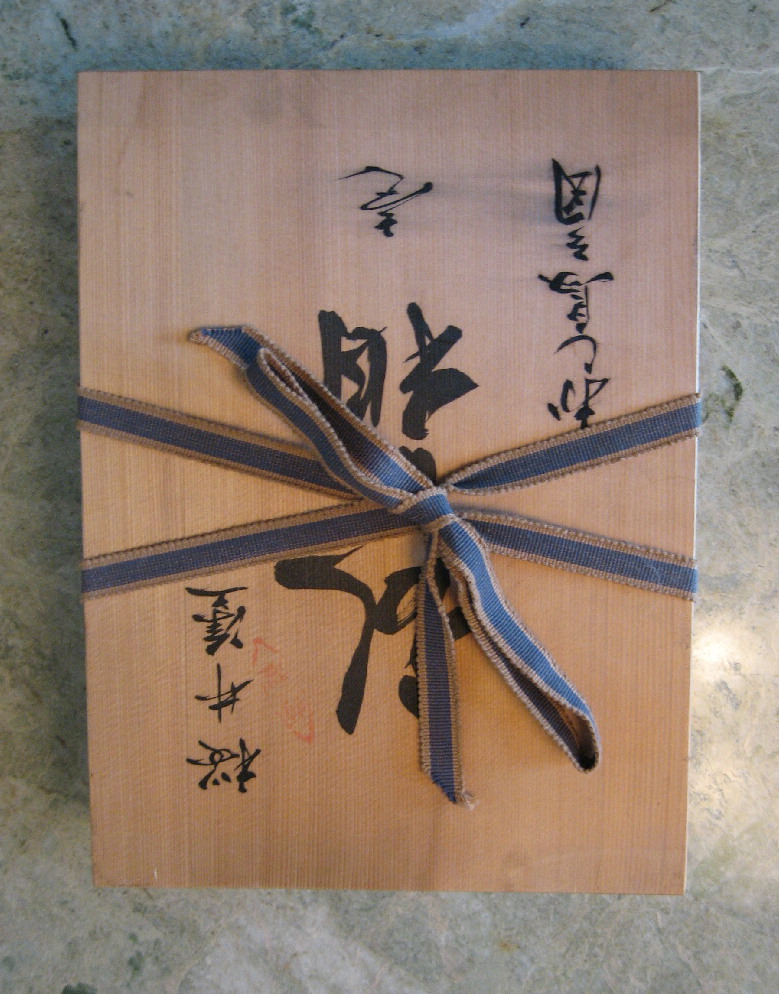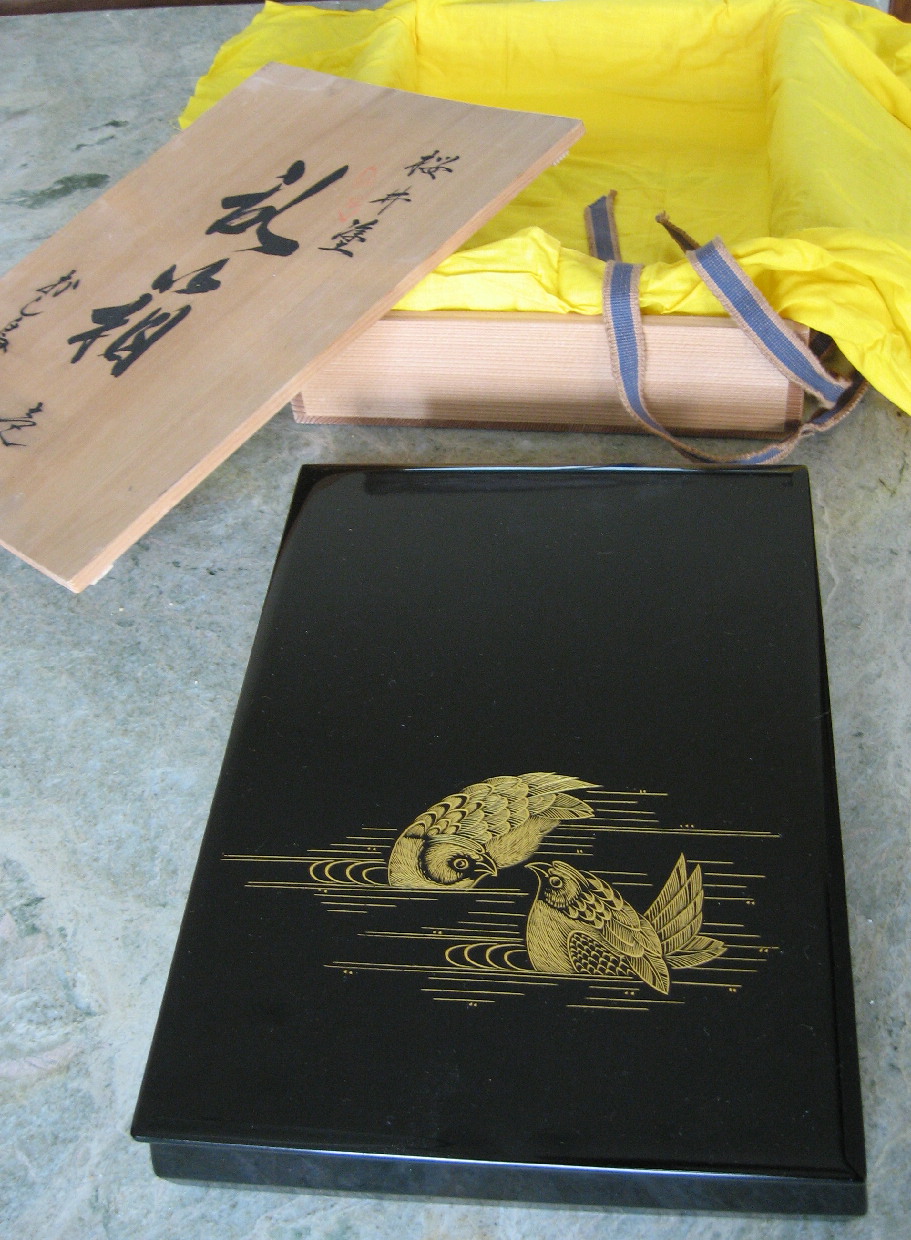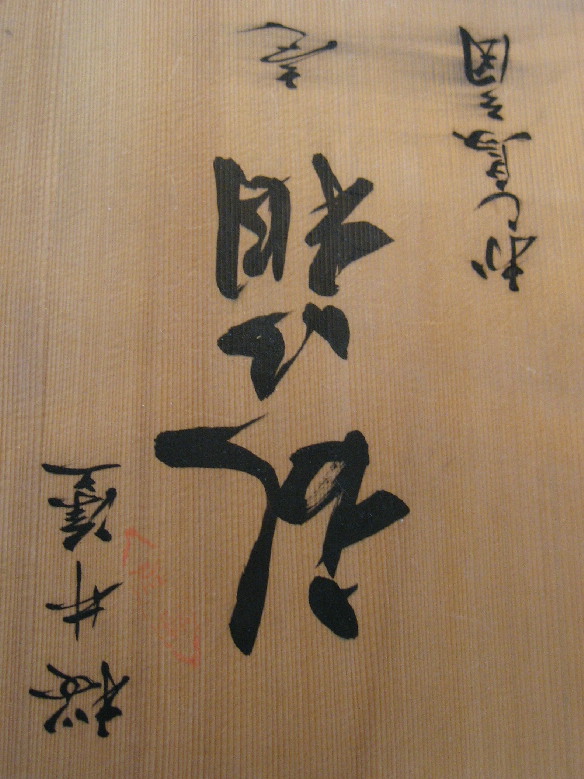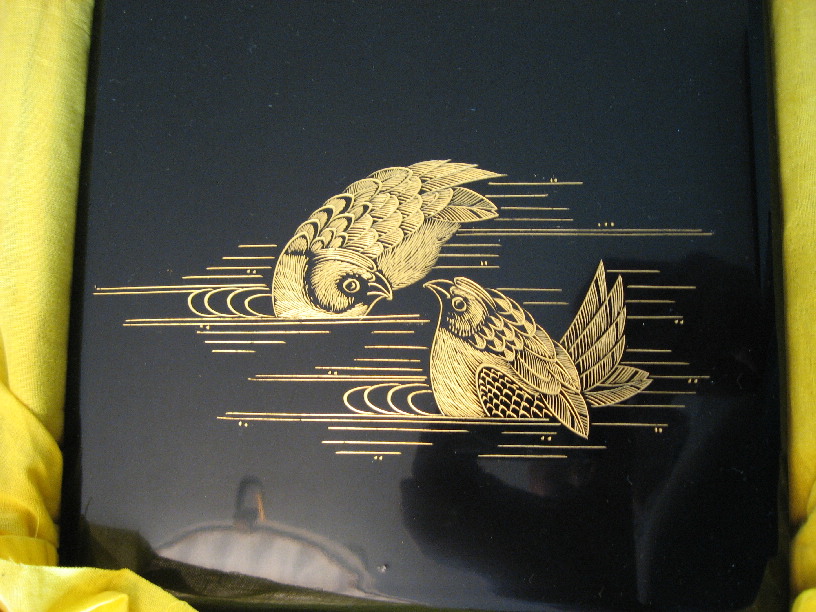


Kanji says ..............
 Artist rendition of Japanese birds in pond. Beautiful Hira-makie gold lacquer work.
Artist rendition of Japanese birds in pond. Beautiful Hira-makie gold lacquer work.

Lacquer
ware is also called shikki (lacquer ware) or nurimono (coated
things). Japanese lacquer is a highly toxic nonresinous sap from the Rhus verniciflua
tree (the same genus of poison ivy and poison oak) which hardens rather than dries.
The poisonous aspect of the medium generally limits its use to special artisans.
Lacquer construction has three stages : kiji, or forming the base, body,
or core of wood or sometimes basketry, leather and paper ; application of lacquer
coatings to seal and protect the object; and decoration of the surface. Application
of urushi differs regionally, but there are three basic types of lacquer coats:
undercoats shitaji, middle coats naka-nuri, and final coats
uwa-nuri. Some styles omit the nakanuri, while the final coat
always uses the most highly refined lacquer because this is the surface which
is decorated. In gold decoration *makie, the final coat is a high-gloss, transparent lacquer rouiro. After 1599 systems
for cultivating lacquer trees and improving lacquering techniques were developed.
In the 18c, colored lacquers and makie became widespread.
There are several
basic lacquer techniques, but decorative techniques are numerous. Iro-urushi is
a multi-colored lacquer in which ganryou (pigments) are mixed into suki-urushi (clear lacquer). Traditionally only five natural pigments (red, black, yellow, green and brown) were used, but
since the Meiji period white and neutral tints were made. Shunkei-nuri is a technique of applying transparent urushi over wood grain so the natural wood pattern shows through. It was reportedly invented by a 14c lacquermaster named Shunkei. A variety of lacquer types evolved in regional production centers. Negoro-nuri was made at Negoroji in Wakayama prefecture. The red surface wears to reveal the underlying black; this effect was later deliberately imitated. Tsugaru-nuri is made in Tsugaru, Aomori prefecture. Muliple layers of colored lacquer (usually green, red, yellow and brown) produce a spotted-marbled effect. The technique reportedly was used first in 1685 by Ikeda Gentarou, the son of lacquer master Ikeda Genbee. Aizu-nuri has been made in the Aizu area of Fukushima prefecture
from the late 16c, with peak output in 1878. The Aizu region also developed chinkin, incising a design
into the lacquer surface, then applying a thin layer of lacquer and applying gold
dust or gold foil to the tacky lacquer. Jouhana-nuri, also called jouhana makie (jigoemon-nuri), was developed in Jouhana in Toyama prefecture by Hata Jigoemon and Hata Tokuzaemon in the
early 17c. It uses techniques of mitsuda-e and keifun-makie and has a white color.


 Inside corner of Fumibako
Inside corner of Fumibako
 Outside corner of Fumibako
Outside corner of Fumibako
| Beautiful antique Japanese Aizu Nuri (lacquer) Fumibako (stationery box). Wooden body made with glossy roiro (black) lacquer finish. The design on the top has two birds (Japanese White Eye or Mukudori (Gray Starling)) done with exquisite Hira-makie gold lacquer work. The custom storage box is made of quality kiri paulownia. It is an authentic antique item maintained under good conditions. As it is a vintage item, this type of design is rarely seen. A very collectable item. History of Aizu Lacquer : This school of lacquer ware was established in Aizu area (Fukushima prefecture) during the time of Toyotomi Hideyoshi (ca 1590's). The Daimyo Gamou Hideyuki was incouraged by Hideyoshi to develope local industry. Lacquer artist's were invited from Hino (Shiga area). Hoshina Makiyuki developed Aizu lacquer during the Edo period and exported many pieces. Estimated Age: Late Edo to Early Meiji (ca.1890). |
| Learn about Lacquer-ware Here |
| Learn How To Tie the Rope On a Wooden Box HERE |